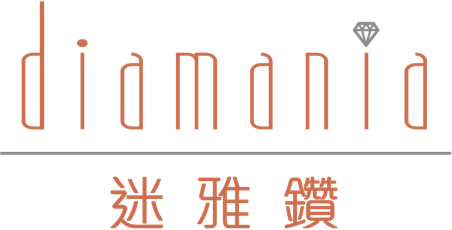Diamonds can be divided into many different shapes, the most familiar being round, heart and pear. Different shapes of diamonds can effectively reflect and refract the incoming light through different cutting methods and proportions, thus highlighting the unique charm and radiance of individual shapes.
Among the many shapes, the most widely sought after is Round Brilliant. The value of Round Brilliant diamonds, therefore, is relatively high, mainly because they are cut to achieve perfect symmetry and proportion. This ensures maximum brilliance, sparkle and fire. Fancy-shaped diamonds, that is, all non-round cut diamonds, include Princess, Emerald, Cushion, Pear, Heart, Oval, Marquise, Asscher and Radiant.
There is no such thing as a ‘best’ diamond shape. It depends purely on personal preference, and the shape that you find most attractive is your best choice. Diamania has a large inventory of diamonds, which includes a wide variety of shapes in addition to the most common round cuts, to meet the needs and preferences of different customers.
Different Diamond Shapes
- - Please view as below -
-
Round Brilliant
-
Princess
- Emerald
- Asscher
- Marquise
- Oval
- Radiant
- Pear
- Heart
- Cushion
Round Brilliant
In the past century, Round Brilliant has been the most popular and most studied diamond shape, and the most demanding shape for lapidarists. The Round Brilliant cut was born in 1919. It was a Belgian diamond cutter Marcel Tolkowsky who considered the refractive response of diamonds and light and the spectral theory that influenced the radiance, accurately calculating the perfect cutting ratio and symmetry. Round brilliant cut has 57-58 facets to ensure diamonds shine and sparkle better than any other cuts. It has become the diamond design for the ring finger for millions of people. The most significant benefit of Round Brilliant diamonds is that they offer a higher flexibility in balancing cutting. Skilled cutting can also make up for the lack of color and clarity. At the same time, they have the brightness and fire that customers hope to achieve. In Hong Kong, almost 90% of customers choose Round Brilliant diamonds. It should be noted that in the case of the same weight, Round Brilliant diamonds will appear larger and come at a relatively higher price than diamonds of other shapes.
Princess
Among non-round diamonds, the most popular shape is the Princess cut. It is frequently selected for engagement rings thanks to its beautiful brilliance and unique cutting. The Princess cut has sharp corners and is traditionally square or rectangular. The Princess cut was first seen in the 1980s. It consists of 76 facets. Its biggest advantage is its contemporary style. It also has a brightness that is equivalent to the round brilliant diamond. As for its shape, the Princess cut is considered more unique and fashionable. An important point to note is that Princess-cut diamonds with a lower color grade will have a more concentrated color at their sharp corners. As such, we recommend that you choose a higher color grade for your Princess-cut diamond.
Emerald
One of the most classic shapes, Emerald-cut diamonds are typically cut into rectangles. The Emerald shape is unique for its large open pavilion, which is cut into rectangular facets to create a distinctive optical visual appearance. Compared to other shapes, the Emerald-cut diamond is surrounded by a stepped cut surface, which is more classical and elegant. As inclusions, external flaws, and color are particularly visible on the large, smooth surface of an Emerald-cut diamond, high grades of color and clarity are especially important.
Cushion
Cushion-cut diamonds, also known as pillow-shaped diamonds, are an enduring and popular diamond shape. Cushion-cut diamonds were the most sought after diamonds before Round Brilliant diamonds took center stage. Cushion-cut diamonds come in different shapes, including square and rectangular with rounded corners. With their relatively large facets, Cushion-cut diamonds can appear as brilliant as Round Brilliant diamonds. The Cushion-cut diamond is similar to the radiant shape, and features an even distribution of color, making it a popular shape choice for the colored diamond. However, as large cut surfaces make inclusions and external flaws more conspicuous, customers who have a soft spot for cushion diamonds should choose a high clarity grade.
Pear
Pear-shaped diamonds combine a single tip with a round bottom design, and are also known as Teardrop-shaped diamonds. The Pear shape is selected for its elegance and dignified feel. Pear-shaped diamonds are worn with their sharp corners directed toward the fingertips. A slender Pear shape can make your fingers look slimmer and more beautiful. This unique shape is also often used on pendant earrings. Pear-shaped diamonds are cut in such a way that they have a bow-tie shadow at the bottom of the center, called the "bow-tie effect". The smaller the bow-tie shadow is, the better. The most traditional Pear-shaped diamonds have a long-to-wide ratio of between 1.4 and 1.6.
Heart
The Heart shape comes second only to Round Brilliant in terms of popularity among couples who view the Heart shape as a symbol of love and romance. It is especially suitable for a marriage proposal or an expression of love. This shape is an adaptation of the Round Brilliant, featuring complete symmetry, equal curvature, and open cuts. As the color of the Heart-shaped diamond is concentrated in the corner, it is better to choose a diamond with a high color grade. The aspect ratio of a Heart-shaped diamond is generally between 0.80 and 0.95.
Oval
The Oval diamond has the same faceting and design concept as the Round Brilliant; but as its shape is elongated, it can make the wearer’s fingers look slimmer and more slender. It is suitable for some people who desire a round cut but who hope to achieve a longer and more slender effect. Although, like a Round Brilliant, this method of cutting increases the brightness of a diamond, if the cutting is insufficiently precise, or the craftsman less skilled, a bow-tie shadow is likely to appear at the center of the Oval diamond. This is called the "bow-tie effect". The aspect ratio of Oval-cut diamonds is between 1.33 and 1.66.
Marquise
The Marquise cut is said to have been named for Marquise de Pompadour, the mistress of King Louis XV of France. It resembles the shape of her lips. Thanks to its elongated shape, the Marquise diamond appears larger than it is, while its length makes the fingers look slimmer and younger. Fine stones are usually placed on both sides to highlight the slender shape. Like some other fancy-cut diamonds, Marquise diamonds also have a bow tie effect. This pattern is usually seen where the diamond is at its widest, along the center of the table. The better the cut, the smaller the bow of the Marquise and the better the contrast inside the diamond. The length-to-width ratio of Marquise-cut diamonds lies between 1.75 and 2.25.
Asscher
The Asscher diamond’s appearance is very similar to that of the Emerald shape. Asscher diamonds are square and have a large stepped cutting surface with obvious corner effects. As the color of the corners of Asscher are more conspicuous, diamonds with a higher grade of color should be purchased. The clarity of a diamond is well-highlighted by the Asscher shape which offers a higher degree of reflection than the Emerald-shaped diamond. Its flare is more dazzling, and its shape is elegant and noble.
Radiant
At first glance, the Radiant-shaped diamond has a similar appearance to the Emerald shape, but its crown and pavilion feature a mix of stepped cuts and brilliant cuts, giving it a more glittering, sparkle effect than the Emerald shape. The most outstanding feature of the Radiant diamond is its angle of repair. The Radiant cut diamond with a rectangular or round auxiliary stone is also very beautiful, as its unique shape improves the color effect. Radiant is the ideal cutting choice for a colored diamond. The aspect ratio of a Radiant diamond is between 1.00 and 1.40.
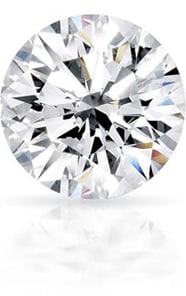
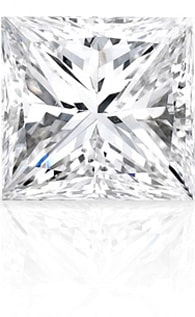
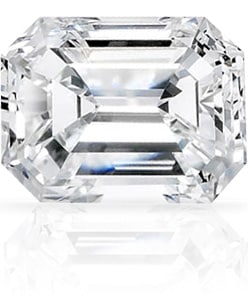
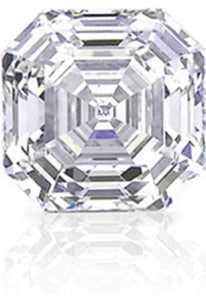
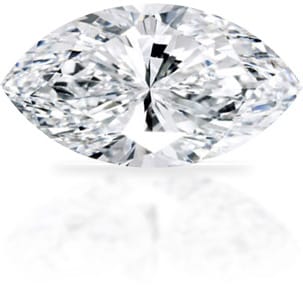
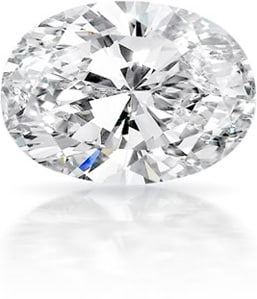
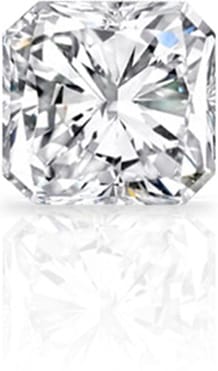
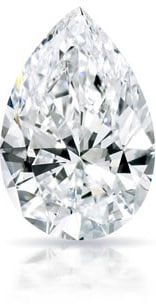
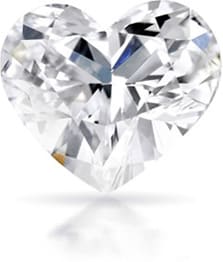
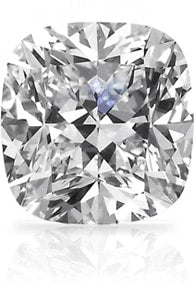










 +852 66299915
+852 66299915
